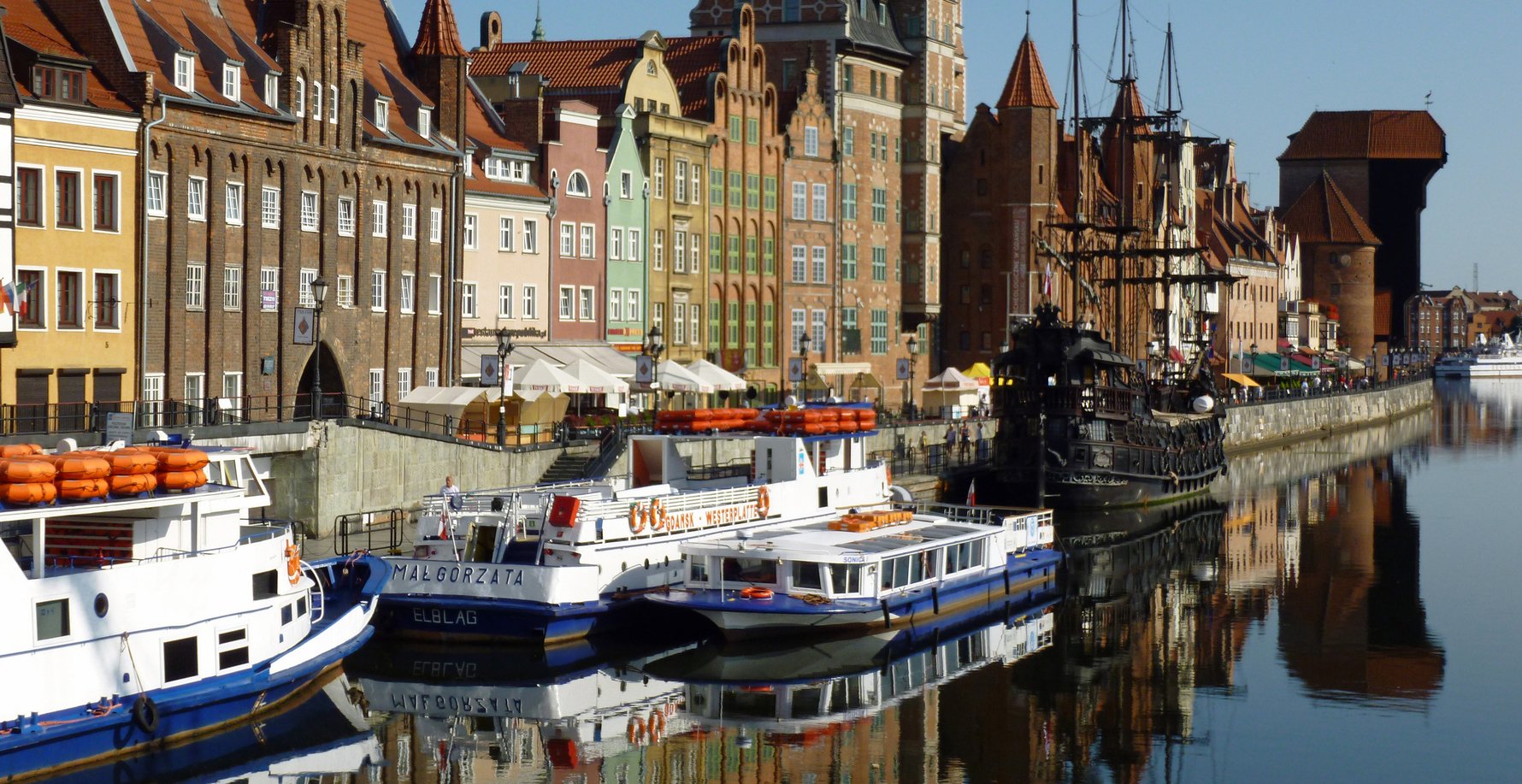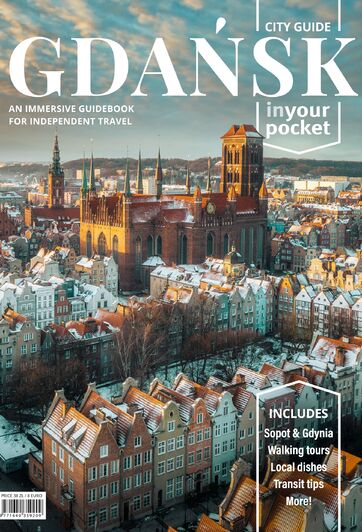You can find more transport info, as well as what to see, where to eat and lots more in our new Gdansk guidebook. Get your copy now!
With the three most-visited cities of Gdańsk, Sopot and Gdynia spread over a distance of 40km, a car can be most useful for getting around. That said, thanks to well-developed public transport options, a car is hardly a necessity. Local SKM train service links the three cities, while trams (in Gdańsk) and buses in each city help you get about. In addition to public options.
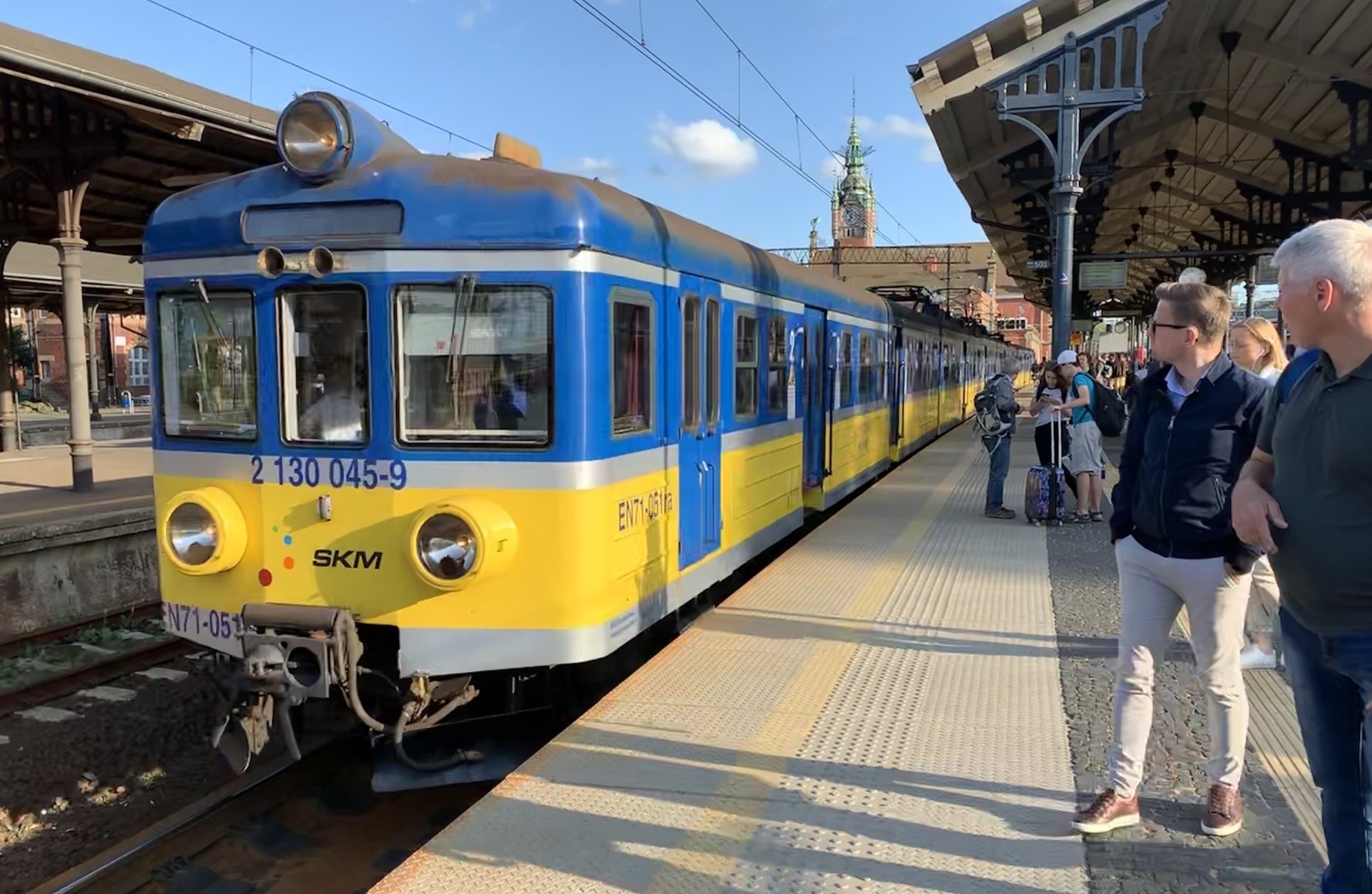
Read more on Getting from Gdańsk Airport Into Town
Read more on Public Transport in Gdańsk
Jump to:
- Public Transport
- Taxis
- By Car
- Car Rental
- By Bus
- Water Trams & Ferries
- Private Transport
- Personal Transport
Public Transport
Travelling between the three cities of Gdańsk, Gdynia and Sopot is a cinch, and best done using the SKM commuter trains. Going away from the urban center, one should take note of the PKM train service. Once a train gets you to a locality, trolleybuses, trams and local buses can further zip you around. In this article, we chat about each public transport option in a little more depth.
With regard to getting the best value out of a ticket, we talk about some more premium options below in Ticket Prices, which are often a better idea than buying individual trips every time and especially if you're staying more than a couple of days!
If you are planning on visiting the Tri-city and have a disability, especially as a wheelchair-bound individual, we recommend you read out article on Travelling with a Disability in Gdańsk, Sopot and Gdynia.
SKM Commuter Rail
Travelling between the three cities of Gdańsk, Gdynia and Sopot is a cinch, and best done using the SKM commuter train. These yellow and blue trains run more or less every 10-15 minutes between 05:00-20:00 through the Tri-city and less frequently outside of these hours with trains also running occasionally between 00:00 and 04:00.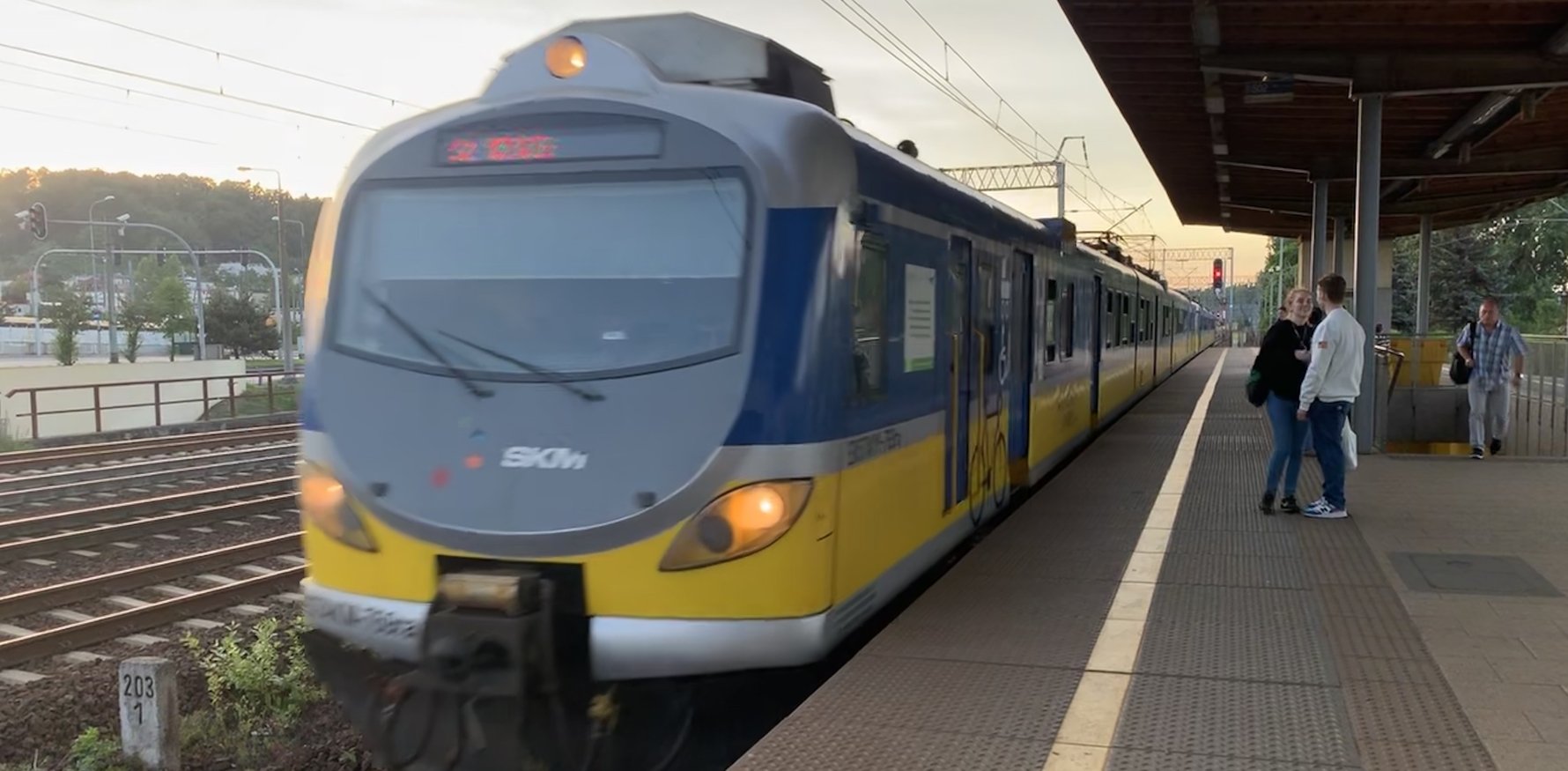
Ticket prices are dependent on the number of stops you are travelling but a journey from Gdańsk to Gdynia will cost 9.00zł and take about 35 minutes (Sopot will cost 6.20zł and take about 20 minutes). Bikes travel for free and should be carried in a specially marked carriage usually at one end of the train. Children under 4 travel for free although you also have to buy a 0zł ticket (we kid you not) and you are likely to be requested to provide proof of the child‘s age so basically keep passports on you at all times. ISIC cards will get you a student discount but only if you're a Polish student, while Euro 26 cards are not valid. You will have to pay a fine if caught travelling without a validated ticket by one of the plain clothes inspectors.
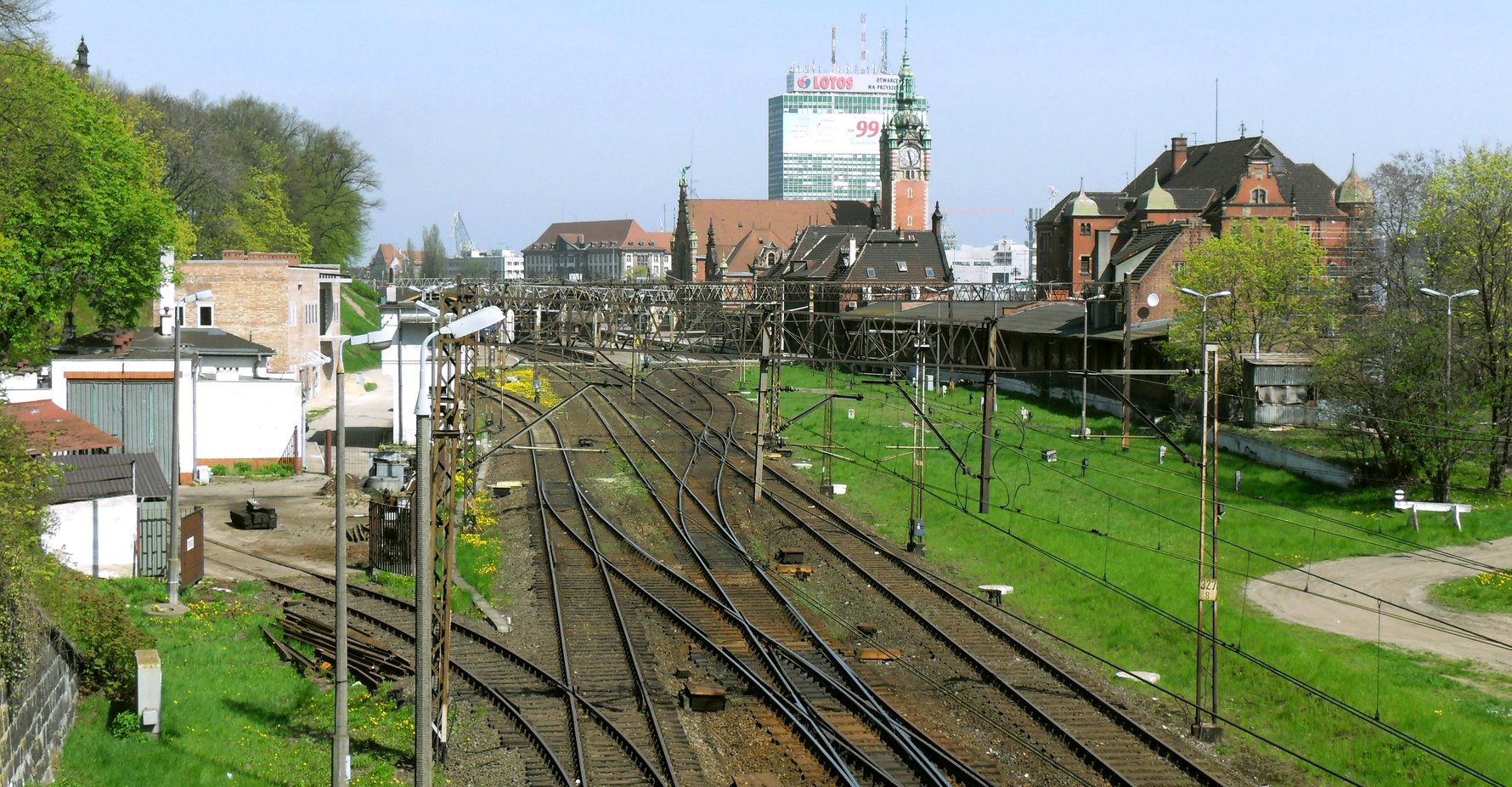
Trolleybuses, Trams & Local Buses
(ZKM/ZTM) can also zip you around the relevant cities. Tickets are issued by Gdańsk and Gdynia. Gdańsk tickets allow you to travel in Gdańsk (and Sopot) and Gdynia tickets allow you to travel in Gdynia (and Sopot). If buying a ticket in Sopot you will need to buy a ticket for the direction you are heading i.e. Gdańsk or Gdynia.
Ticket Prices
Single - 4.80zł, 75 minute ticket - 4.80zł, Single ticket for use on a ‘fast’ line - 5zł, 75 minute ticket for ‘fast’ lines - 5zł, 24-hour ticket - 18zł
Tickets can be bought from kiosks or an increasing number of ticket machines which have English and German language options.
If you‘re planning on staying longer then there is the Metropolitan ticket which gives you travel in the cities for 24 hours - the first type covers SKM local trains and then buses, trolleybuses and trams in EITHER Gdansk or Gdynia and costs 26zł (13zł reduced) or a second version which is all travel in all 3 cities at 30/15zł. These are available from SKM and ZTM points not the machines.
A recommended way to avoid having to decide on which ticket and then having to negotiate how to get it with the woman in the kiosk is to pick up a Gdańsk – Sopot – Gdynia Plus tourist card. As well as the discounts and free entry to many of the sights that the card brings, you will also be entitled to free travel on the whole Tri-city transport network. Pick it up at the tourist information points around the city.
Those looking to spend a little longer here might want to consider picking up one the local travel season tickets which includes one - the Metropolitan Card - which allows you to access transport services throughout the whole metropolitan area.
National Trains & Buses
If you are looking to travel out of the city you will need to use the national PKP (trains) or PKS (bus) services. For trains you find arrival (Przyjazdy) and departure (Odjazdy) times marked on a board in the main station building with the timetables displayed on A1 size cards (departures on a yellow card and arrivals on a white card). Main-line train services run from all three stations in the Tri-city as well as Gdansk-Oliwa and Gdansk-Wrzeszcz. Regional and national bus services (such as services to Frombork) run from Gdansk Bus Station which you will find perched on the hill overlooking the train station. The bus station can be reached via the tunnel entered via the stairs outside the main train station and KFC.
Taxis
Although most taxis are now trustworthy with honest meters, there are still certain drivers who will quite happily take advantage of your ignorance and overcharge for journeys. To guard against this ensure that you use a taxi which is clearly marked. The firms listed below are all reliable with Neptun being the only firm allowed to sit outside of the airport terminal building. Look out for 19686 on the sides of their cabs. Taxis are slightly cheaper if called in advance. If calling one of the abbreviated numbers such as 19686 please be aware that you may need to prefix it with 58 if calling from your mobile.
And now a small warning. Because each of the cities are independent when it comes to taxis, the driver is allowed to put the meter to the higher tariff when he leaves Gdańsk. That means if you are travelling from Gdańsk to Sopot or Gdynia the tariff increases at the Gdańsk/Sopot border. This can make a difference to the fare between Gdańsk and Gdynia because the Gdańsk taxi will spend more time in his own city and therefore at the lower tariff. A taxi from Gdańsk to Gdynia will cost around 80zł whereas a taxi in the other direction will cost around 100zł as the Gdynia taxi will spend more of the journey outside of its own city.
- Elite Airport Taxi Gdańsk
- Free Now
- Hallo Taxi (Gdańsk)
- Neptun Taxi (Gdańsk)
- Super Hallo Taxi (Gdańsk)
- Uber
By Car
Poland remains one of Europe’s leading nations in road fatalities, a statistic that will surprise few who have had the pleasure of using the roads here. A lethal combination of poor road surfaces, networks unsuited to the volume of different traffic and, most of all, aggressive driver behaviour result in the common sight of accidents and traffic jams around the country. Exercise caution, keep a safe distance from the vehicle in front, rub those rosary beads and God speed.
The speed limit in Poland is generally 50km/hr in cities, 90km/hr outside urban areas, 120km/hr on dual carriageways and 140km/hr on motorways. Cars must have their headlights switched on at all times and carry a red warning triangle, first aid kit, replacement bulbs, a national identity sticker and proper registration and insurance documents. Poland also has strict drunk-driving laws: 0.2‰ is the maximum blood/alcohol limit, so forget about having even a single beer. EU citizens may use their home driving licences as long as they are valid (and you have it on you when driving), however citizens of countries that didn’t ratify the Vienna Convention (tsk, tsk Australia and America) will find their licences technically invalid (though this has never been a problem for anyone we know).
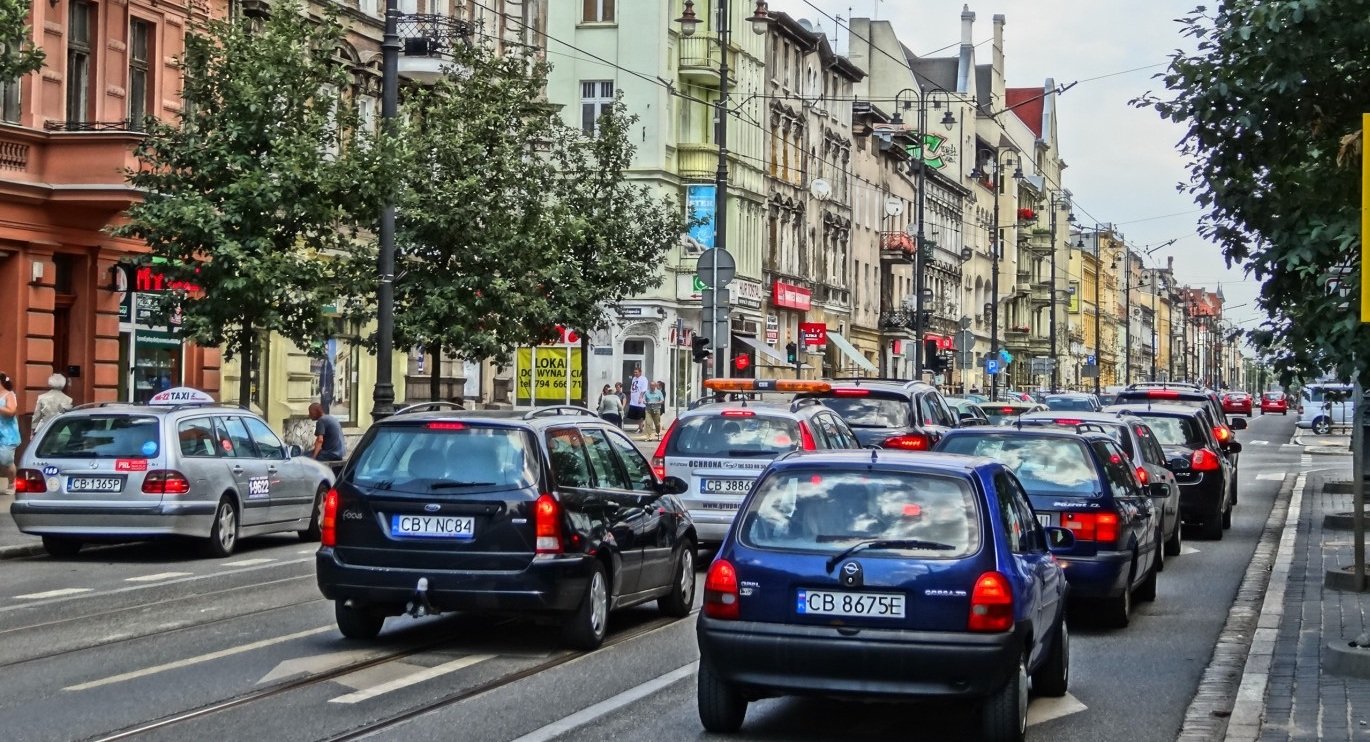
Getting to Gdańsk By Car
There are three main routes into the Tri-city: the E28 from the west via Gdynia; the E77 from the south-east which enters the city via Gdańsk and the A1 highway from the south.
Parking is available once you arrive in Gdańsk but remember that the Old Town area is permit parking only and you will be fined by the city police for driving into the Old Town without a pass. Watch out for the signs marking the start of the permit parking zone. You will have to use street parking which is paid for (5.50/3.9zł for the first hour) and you will need to buy a ticket at the street machine.
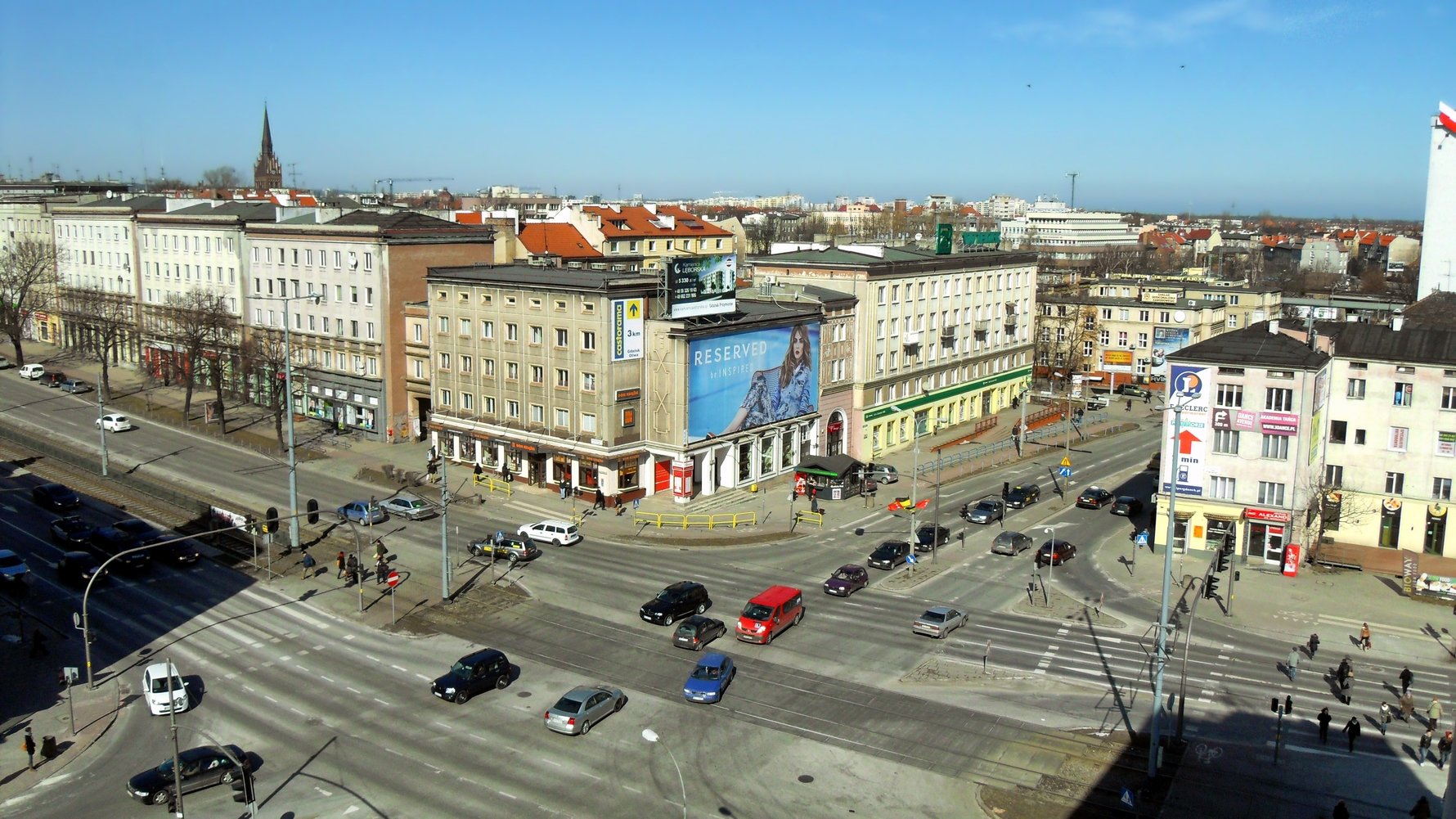
Car Rental
All most travellers need to rent a car in PL is 18 years of age, a credit card (not debit), and a valid foreign driver's licence. Be aware, however, that those from countries that didn't ratify the Vienna Convention on Road Traffic (United States, China, Australia...) cannot legally drive on their home licences; technically an International Driver's License is required in those cases (in the US these are issued by AAA for a fee). If you don't have a license in line with the Vienna Convention, or the required IDL, you may be denied the ability to drive a rental car. Though some car rental companies (the dodgier ones) will still rent you a car (since it's good for their business to ignore international law), be aware that you are assuming full liability if you get behind the wheel; not only can you get a citation from the police, but if an accident were to occur, you would be fully responsible for any damages, regardless of the circumstances.If you're looking to leave the country in your rental car, be aware that you can't cross the borders into Ukraine, Belarus or Lithuania in a rental car.
Car rental companies like AVIS, EUROPCAR and HERTZ all have desks at Lech Wałęsa Airport, directly across from the arrival gate.
By Bus
One of the quickest, most comfortable and most modern ways to get around Poland in this era of rail improvements is by coach or bus. There are many local bus services, but the national bus business has been cornered in recent years by Flixbus.
Water Trams & Ferries
Water trams (a literal translation of what Poles call 'ferries') sail during the summer season departing from (or, at the very least, stopping at) Targ Rybny on Gdańsk Old Town's waterfront. Inconveniently, tickets for all services departing Gdańsk must be bought from the ticket booth next to the Green Gate.
More practical information you will find in our new Gdansk guidebook. Get your copy now.
